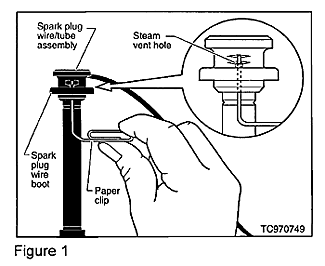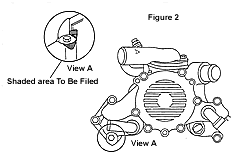It happens to us all sooner or later – a vehicle we have repaired comes back to the shop with either the same problem or a related problem that the owner is certain we’ve caused. It doesn’t occur very often, but when it does, it’s extremely disheartening and embarrassing – not to mention detrimental to our paychecks because we have to fix it on our own time. Comebacks are to a technician what kryptonite is to Superman: It’s our only weakness. Well, tool trucks and racecars rank as close seconds.
Having been there, I understand the dynamics of comebacks. You can do a particular repair job 100 times and never have a problem. But no matter how competent you are, it’s these kinds of repetitively successful jobs that can lull you into a false sense of security and cause you to overlook a small, but important, detail. This technical tip will help you identify one such small detail and possibly circumvent an embarrassing comeback.
 Some Chevrolet Camaro and Pontiac Firebird owners may experience excessive shredding on the inner edge side of the serpentine belt. The belt making contact with water pump casting flash material below the lower, right hand water pump bolt is the cause of this drive belt butchery. (See Figure 1.)
Some Chevrolet Camaro and Pontiac Firebird owners may experience excessive shredding on the inner edge side of the serpentine belt. The belt making contact with water pump casting flash material below the lower, right hand water pump bolt is the cause of this drive belt butchery. (See Figure 1.)
The vehicles affected are:
• 1993-94 Chevrolet Camaro with a vehicle identification number (VIN) prior to: 2G1FP22P2R2158372; and
• 1993-94 Pontiac Firebird with a vehicle identification number prior to: 2G2FV22P7R2223329.
Both models are equipped with a 5.7 liter V8 (VIN P-RPO LT1).
The repair for this problem is very simple. Using a pair of pliers, break off the sharp edge of the flash material and smooth the area with a file. (See Figure  2.)
2.)
CAUTION: Do not remove the lower right hand water pump bolt. If the bolt is removed, the water pump sealing surface will be disturbed and the gasket will have to be replaced.
NOTE: Water pumps built after January 31, 1994 are cast so as not to have flash material in this area.
Because the excessive flashing problem is a little hard to see, you might have thought that something got up into the engine compartment and thrashed the belt. But this time, armed with the right information, you won’t fall victim to missing one of those dreaded little details. The next time your customer comes back, it will be to gladly spend more money on another quality repair.
Written by ALLDATA Technical Editor, Rich Diegle. Rich is an Advanced Engine Performance Certified and ASE Master Technician with an Associate of Arts degree in automotive technology and 22 years of dealership and independent shop experience.
Courtesy of ALLDATA.
For additional information, visit www.alldata.com.












